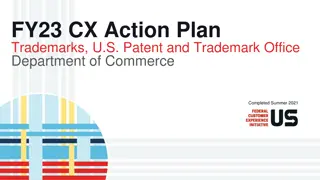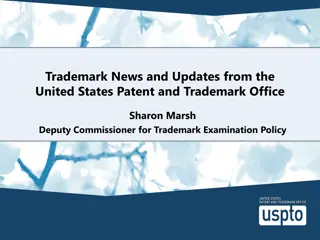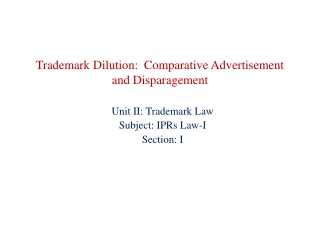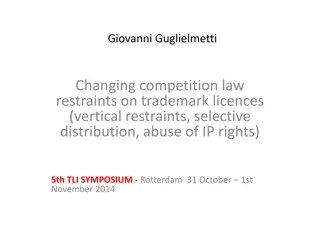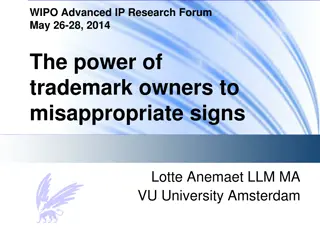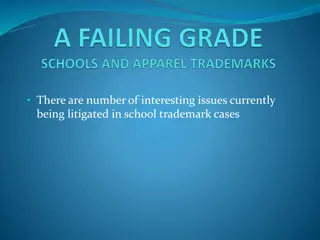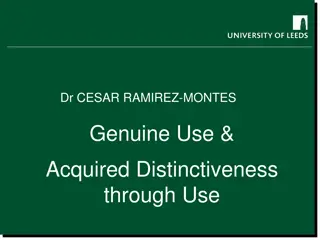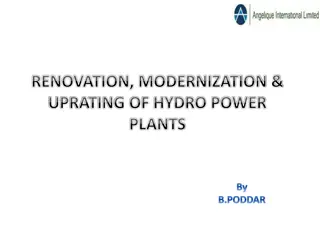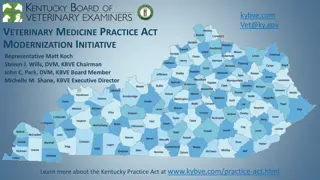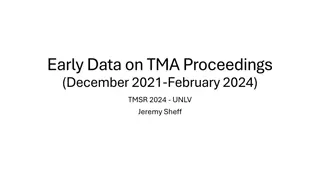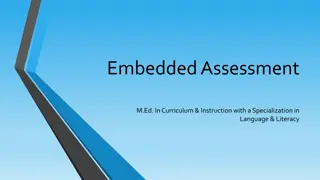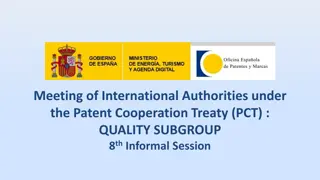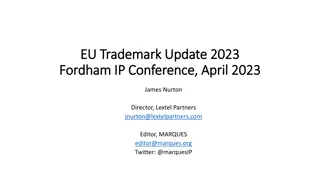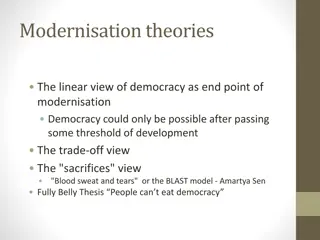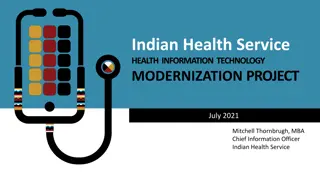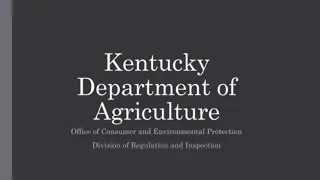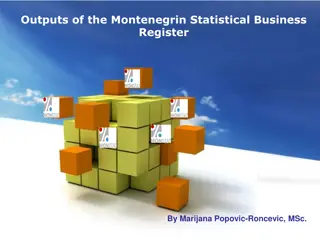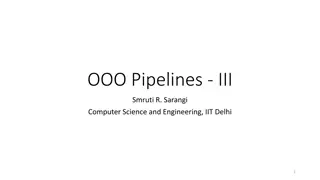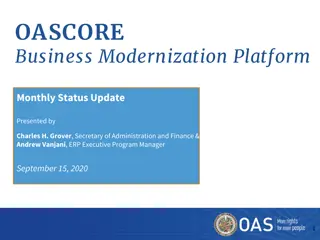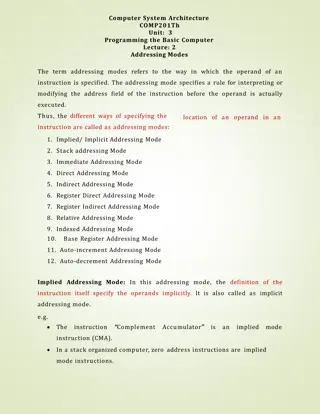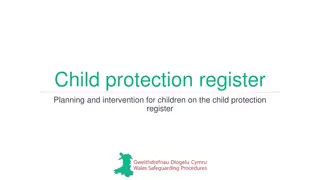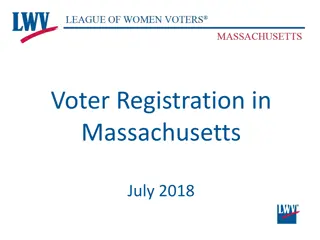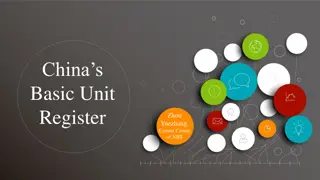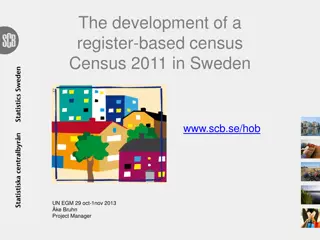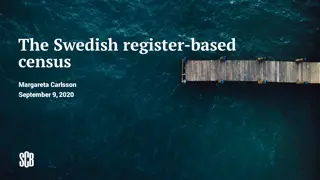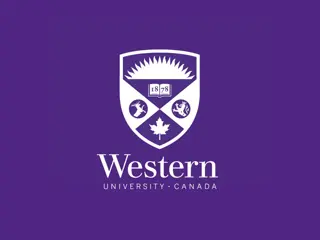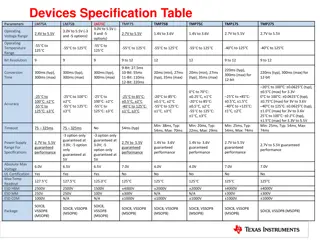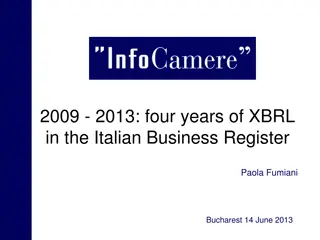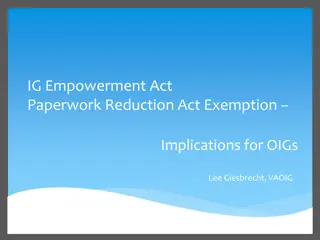Evaluation of the Trademark Modernization Act: Solving Clutter on the Register
Addressing the issue of clutter on trademark registers caused by unused registrations, the study evaluates the impact of the Trademark Modernization Act (TMA) in expunging and reexamining marks that are not in use. It discusses the scope of the problem, proceedings initiated, targeted registrations, third-party petitions, and outcomes of the proceedings.
Download Presentation

Please find below an Image/Link to download the presentation.
The content on the website is provided AS IS for your information and personal use only. It may not be sold, licensed, or shared on other websites without obtaining consent from the author. Download presentation by click this link. If you encounter any issues during the download, it is possible that the publisher has removed the file from their server.
E N D
Presentation Transcript
An Empirical Evaluation of the Trademark Modernization Act University of Houston/IPIL - 2024 National Conference in Santa Fe Jeremy Sheff St. John s University
The Problem: Clutter on the Register Unused registrations raise clearance costs and keep potentially useful marks out of the hands of productive companies Perverse Incentives Encourage Registration of Unused Marks Chinese Government Bounties E-Commerce Platform Trademark Registries (esp. Amazon) The Scope of the Problem Random audits of renewal applications find that about half claim the mark for goods on which the registrant isn t using them, and 10-15% claim a mark that is not being used at all Increase in applications from China has become a burden to the examiner corps
TMA Proceedings: Expungement & Reexam 16a Expungements: Expungement on the basis that the mark has never been used in commerce on or in connection with some or all of the goods or services recited in the registration. 16b Reexamination: Cancellation on the basis that the mark was not in use in commerce on or in connection with some or all of the goods or services recited in the registration on or before the relevant date. Relevant Date: For 1(a) use-based applications, the application date (unless filing basis later amended to 1(b)) For 1(b) intent-to-use applications, the date when the statement of use was filed (or the deadline for filing a statement of use)
Who Initiates Proceedings? Director- Initiated Petitioner- Initiated Commandeered Total 248 Expungement 1 209 38 1,015 Reexamination 714 219 82 Total 715 428 120 1,263
Where Do Targeted Registrations Come From? Other Foreign National Chinese National Multiple No Nationality Domestic Nationalities Data Director- Initiated 97 606 12 - - Petitioner- Initiated 201 111 101 13 2 48 46 26 - - 2 Commandeered 346 763 139 13 Total
What Happens to Third-Party Petitions? Instituted Not Instituted Commandeered Pending Total 130 60 38 19 Expungement (53%) (24%) (15%) (8%) 247 139 56 82 24 Reexamination (46%) (19%) (27%) (8%) 301 269 116 120 43 Total (49%) (21%) (22%) (8%) 548
Proceeding Outcomes Petition Still Pending Proceeding Not Instituted Instituted but Still Pending Amended by Registrant Cancelled Cancelled In Part Other Total 0 0 392 1 302 0 20 Director- Initiated (0%) (0%) (55%) (0%) (42%) (0%) (3%) 715 41 114 59 11 119 51 33 Petitioner- Initiated (10%) (27%) (14%) (3%) (28%) (12%) (8%) 428 0 0 31 0 61 16 12 (0%) (0%) 114 (9%) (26%) 482 (38%) (0%) (51%) 482 (38%) (13%) (10%) 120 Commandeered 41 12 67 65 (3%) (1%) (5%) (5%) 1,263 Total
How Long Does All This Take? Petitioner- Initiated Director-Initiated Commandeered Total 715 428 120 1263 (100%) N (57%) (34%) (9.5%) - - - 69 (35) 94 (81) 82 (64) Time from Petition to Rejection (in days) [n=116] [n=120] [n=236] - - - 86 (57) 147 (122) 105 (87) Time from Petition to Institution (in days) [n=269] [n=120] [n=389] . 231 (150) [n=59] 277 (82) 238 (142) [n=70] Time from Institution to Termination (in days), Opposed (.) [n=0] [n=11] 112 (34) 126 (46) 124 (50) 118 (40) Time from Institution to Termination (in days), Unopposed [n=321] [n=151] [n=78] [n=550] . 148 (135) [n=59] 187 (109) [n=11] 155 (131) [n=70] Time from Registrant's Response to Termination (in days) (.) [n=0] . 65 (47) . 65 (47) (.) (.) Age of Pending Petitions (in days) [n=0] [n=43] [n=0] [n=43] 117 (110) 180 (177) [n=59] 209 (215) [n=31] 131 (132) Age of Pending Proceedings (in days) [n=391] [n=481]
Emptying the Ocean with a Teaspoon https://www.uspto.gov/dashboard/trademarks/
Clutter Is Cheap to Create and Costly to Remove Institutional Responses exacerbate the problem A TEAS Plus application to register a trademark costs $250 per class A Petition to Institute a TMA proceeding costs $400 Making clutter costlier to create imposes costs on everybody, not just the clutterers
Of Automation and Perverse Incentives There are broad incentives to create clutter; these incentives scale Algorithmic enforcement and positioning on e-commerce platforms Chinese government bounties (now largely defunct) The incentives to remove clutter are narrow and don t scale A fishy-looking hit in a clearance search A priority contest between competitors An examiner discovering a specimen farm Automation creates this asymmetry and with it opportunities for bad- faith manipulation when information is important to human beings who use the automated system but invisible to the machines that run it.


